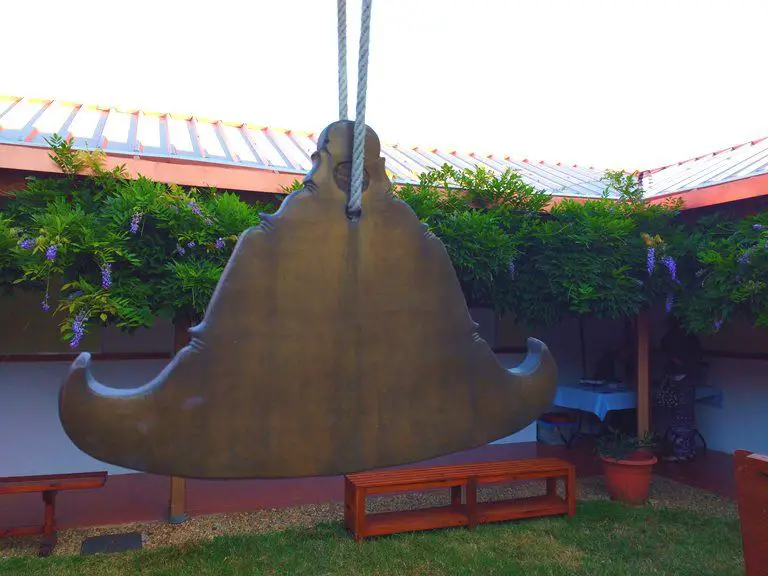
Participating in the 10-day Vipassana Meditation course was a realization of my dreams. And it taught me more than I could have expected. Below you will learn about my experiences, struggles, my daily meditation routine, and the insights I’ve gained by sitting for ten hours a day with my eyes closed.
It was a course, designed by the late S.N. Goenka, the Burmese Vipassana meditation master. It took place in the Dhamma Neru Meditation Center, in a small village called Santa Maria de Palautordera just about 60 km north of Barcelona, Spain. These donation-based courses are available all around the world and you can find one closest to your location here.
Here’s my review of a 10-day silent meditation retreat:
1. I thought I knew something about meditation
In my teenage years, we used to meditate before every Ju-Jitsu training session. It fascinated me from the start. Imagine a group of thirty students sitting on the mat in the Seiza position and silently breathing. There was an air of dignity around it – like during the Japanese tea ceremony. But why exactly would you sit down with your eyes closed? There was something mysterious about it, and I like mysterious things. One of my high school friends got interested in Mahayana Buddhism and she even lent me some books about the topic. At the time they struck me as somehow superficial, and the teachings of Buddha seemed so vast that I temporarily resigned from my search for understanding. But the seed was planted and it was the beginning of a long journey that led me to the Vipassana meditation course so many years later.
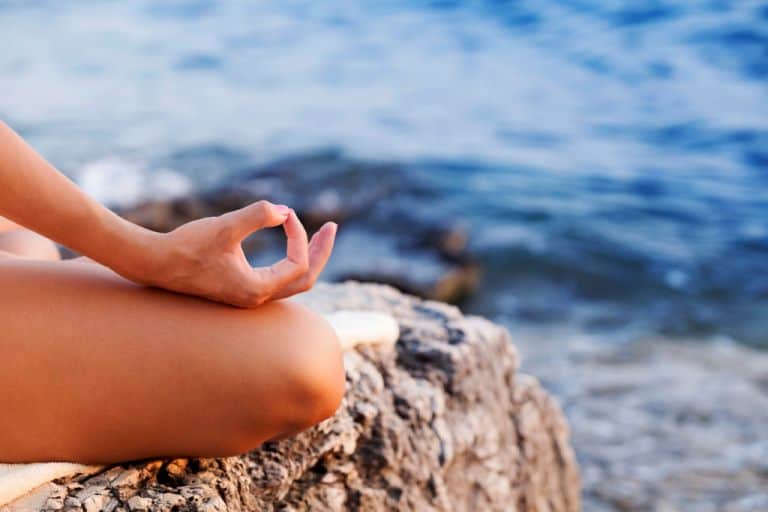
I can still remember my first, self-imposed meditation session. I was sitting on my bed with my back against the wall, and appropriately wearing pajamas. These first twenty minutes seemed almost unbearable. I was lost in thought all the time and felt blessed when the timer relieved me from my torment. But I knew there was something there, and decided to get better. I got some guided meditation recordings and audio tracks that put my brain in the relaxed, Alpha state of mind. I knew the basic goal was to concentrate on the breath and not get lost in thought. I practiced this simple breathing meditation (quite regularly) for around seven years and usually didn’t spend more than thirty minutes in one sitting. After reading Mindfulness in Plain English, The Way of Zen, Waking Up, and Wherever You Go There You Are, I thought I understood mindfulness and meditation quite well. But as I’ve learned in the Vipassana course, a pile of Buddhist books can’t compare with an ounce of personal experience.
2. Arrival at the meditation center
I took a train from Barcelona to the hilly village where the course was held. There I met a Canadian girl who immediately struck me as a fellow meditator. We walked together to the meditation center and I learned that it was her second round. Only this time she was a helper and would get only a limited amount of meditation (a paltry four hours per day). She told me her first try was hard – there was a lot of crying and gnashing of teeth. Other second-timers I’ve met at the steps of the Dhamma center told me it was survivable. As I ate some veggie cookies they gave me, I thought it couldn’t be that hard.
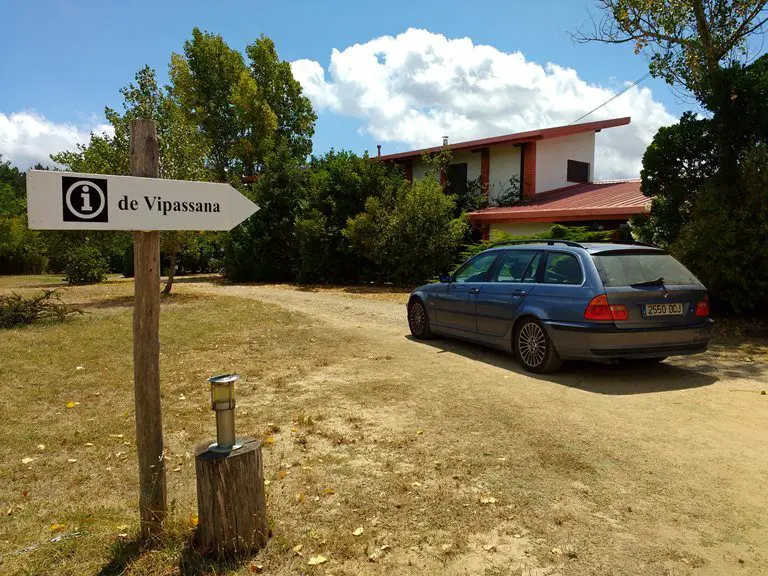
3. How we meditated for 10 hours per day
The schedule of the course was strict, and we lived basically as pseudo monks and nuns. It was a Groundhog Day kind of experience. The first gong was always at 4:00 AM. We had 30 minutes to crawl out of bed and appear at the meditation hall at 4:30 sharp (everything was punctuated by the gong). It was still dark outside and the heavenly bodies glared at me as I stumbled on my way to find the inner light. The first session lasted for two hours, and then we had a delicious breakfast (all food was veg) and one hour of rest. Then it went like this: 1.5 hours of meditation either in the room or in the hall. 1 hour of meditation in the hall for everyone. 1.5 hours of meditation in the hall or the dorm. At 11:00 AM we had lunch and some rest. Then again meditation – 1,5h, 1h, 1,5h. At 5:00 PM we had some tea and fruits and then just one more hour of meditation before the discourse. At 7:00 PM we watched the pre-recorded discourse by S.N. Goenka – our physically absent, yet ever-influential master. After the discourse, we had some more meditation and then we could finally walk around the yard for a few minutes and go to sleep. This schedule (with minimal variations) lasted for 10 days straight. It is important to note that we had two other instructors but they mostly answered our questions and managed the course – our real spiritual guide was the Goenka Gi.
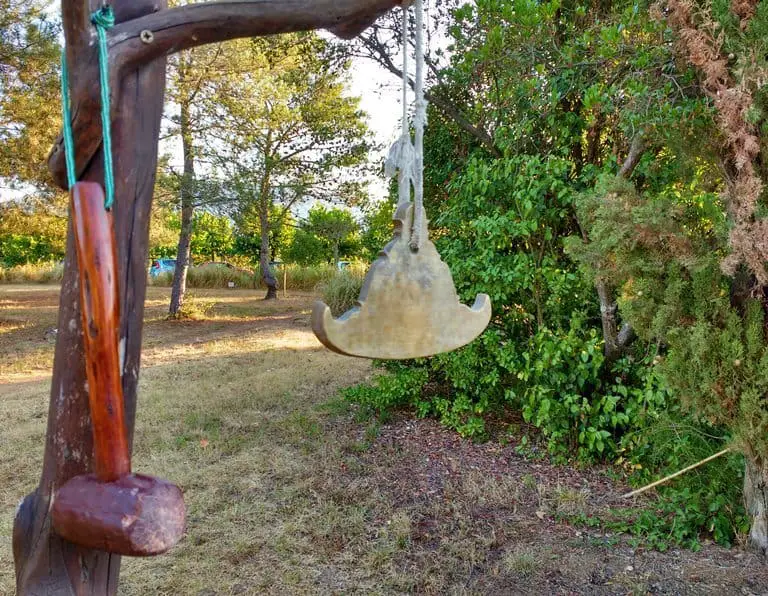
4. The dramatic code of discipline
All of our precious belongings were confiscated at the entrance. No books, no paper, no laptops, and no smartphones. Additionally, men were separated from women in dorms and the meditation hall. Moreover, we had to observe the Noble Silence which meant we couldn’t talk to anybody except our instructors for the duration of the course. I imagine that the “no-talking” part was dreaded by some of the participants (especially Spaniards) but I enjoyed it a lot. People get along so well when they’re not allowed to talk to each other. I’ve also found that the absence of the smartphone didn’t bother me at all. I understood how addicted we are to these devices, and that we don’t need them as much as we think we do.

5. Prerequisite to enlightenment – back pain
The first thing that comes to mind when I think about the course is excruciating back pain. We could only sit on the pillows without any back support – imagine doing that for ten hours a day. Only people with real or imaginary medical conditions could sit on a chair. I’ve spent my first days in a lot of pain, but after much negotiation with the instructor, I was permitted to sit with my back against the wall (from time to time). It was a grand victory for humanism.
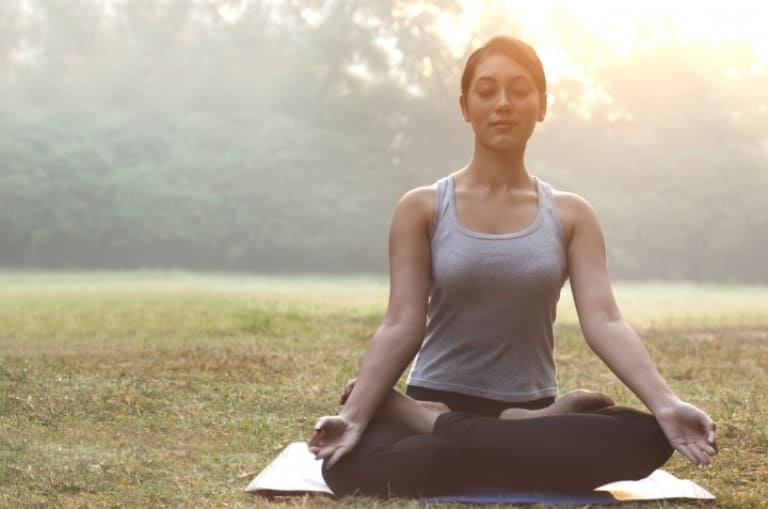
Many men were in pain and you could see it, but the women were tough as hell and they would sit – Statues of Buddha – for hours on end. Maybe it’s something about their physiology or maybe it was just because they were such yoga girls. I’ve read that the lotus or half-lotus positions are beneficial to the meditation practice, but for most Westerners, they are impossible to hold for long periods. So prepare before the course, or prepare to suffer.
6. What did we do? (Or, “Did you just sit there for ten hours thinking about nothing?”)
For the first three days, we did the Anapana meditation which is all about concentrating the mind on the sensation of the breath. During Anapana, you just sit down, close your eyes, and try to notice the breath as it moves in and out of the nostrils. Then you can start focusing on a small area just between the nose and the upper lip. The goal was to feel the sensation but also to learn how to keep attention on one object for a long time. I felt the breath, and then, after a few seconds, a thought would appear. The instruction was to notice that thought, acknowledge it without judgment, and come back to the breath. Come back to the breath – for hours and hours. There were moments when my mind was as still as an ancient pond. But at other times I kept wandering around, thinking mostly about trivia, the past, and the future.
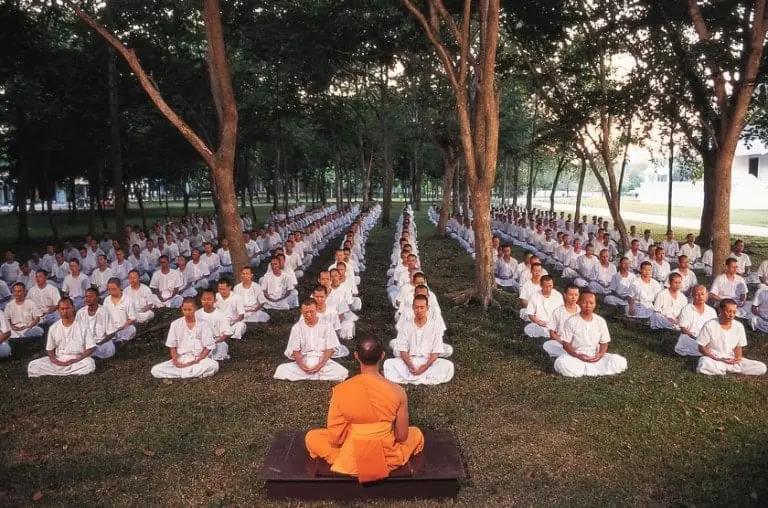
In Buddhism this phenomenon is called “The Monkey Mind” – it catches the next branch and jumps from one thought to the other. The venerable Goenka told us that “the mind doesn’t like to live in the present” (the implication being that that’s exactly where it should be). I thought it was a great insight because I glimpsed how through constant thinking, the ego holds power over us. I also complained to my instructor that sometimes I could not stop the flood of thoughts and that today was worse than yesterday. He told me that it wasn’t worse – it was different.
7. Just observe – calmly, patiently, and persistently – you are bound to be successful
After two days of the breathing meditation, I started realizing when thoughts appeared in my mind, it was easier and easier to come back to the present. It was great because finally, through direct experience I’ve learned that we spend most of our lives “thinking without knowing that we’re thinking”. We identify with our thoughts instead of witnessing them as by-products of consciousness, and that’s one of the causes of suffering. During the Anapana session, I could notice the appearance of a thought or a sensation, and not become involved with it. It was extraordinary.
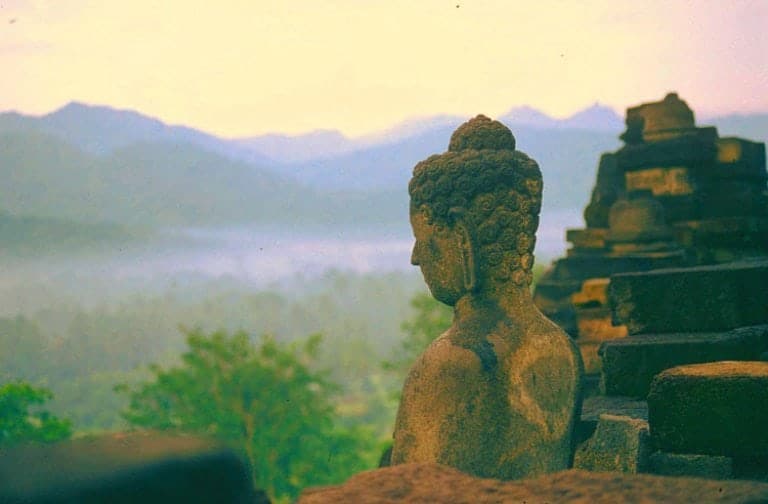
8. The core of the matter – the Vipassana practice
After three days of breathing meditation, we were ready for Vipassana which we would practice until the end of the course. This time it was all about “working with the bodily sensations”. We would sit, and “scan” our whole bodies from the cranium to the tips of the toes. First, you would notice the top of the head. Is there any sensation there? Then the forehead? Sensation? And like this, it would continue till we reached the toes. The important thing was not to manufacture the sensation or “think” about the part of your body. It was all about noticing; without judgment, craving, or aversion. I would sense what was going on in my fingers, and I would feel a slight pulsation. My job was to acknowledge the sensation without adding any meaning to it.
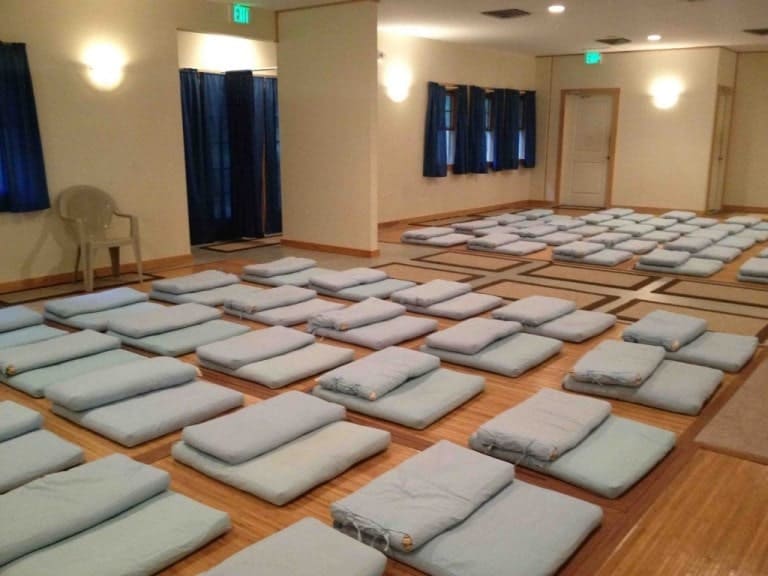
9. Why practice meditation Goenka style?
Because the goal of the meditation is to remain perfectly tranquil while facing all sensations – pleasurable or painful, positive or negative. The liberation comes, they said when you eradicate all of your Sankharas – cravings, aversions, desires, and the habitual patterns of the mind. Vipassana prepares you for this task because it teaches you to look at all sensations with the perfect understanding of Anicca, or the Law of Impermanence. It says that all thoughts and sensations are evanescent – they arise just to pass away. Thus, when you scan your body and you experience a pleasurable sensation, you don’t attach yourself to it. You just observe it with calm, knowing that it will pass away in a moment. Also, when you have a painful sensation, you don’t identify yourself with it. You just look at it, and after a few moments, it’s gone. As a beginner Vipassana meditator, it’s really hard to notice any sensations in the body, but after some practice, you get sensations everywhere. It sounds incredible, but I was able to witness a flow of energy throughout my body. It’s like a subtle vibration and it feels great but they told us not to attach ourselves to it – just observe it. Some more advanced meditators even reported feeling as if their bodies were made of light. I guess I have to wait a bit more for that.

10. The Vipassana meditation practice
With enough practice, you can utilize Vipassana in your everyday life. When anger arises, you can look at it as a bodily sensation, notice it, and watch it dissolve without identifying yourself with it. It’s the same with internal sensations – desires, cravings, addictions, and obsessions. The idea was this: If you stop generating new cravings and aversions, the old ones (hidden within your subconscious mind) will start coming to the surface. When they arise – an emotion, a horrible memory – you observe them just like the rest of sensations. Then, after a while, they will lose their power over you. When you finally get through the whole stock of Sankharas – your habitual thought patterns, cravings, and aversions – you will finally reach the state of liberation.
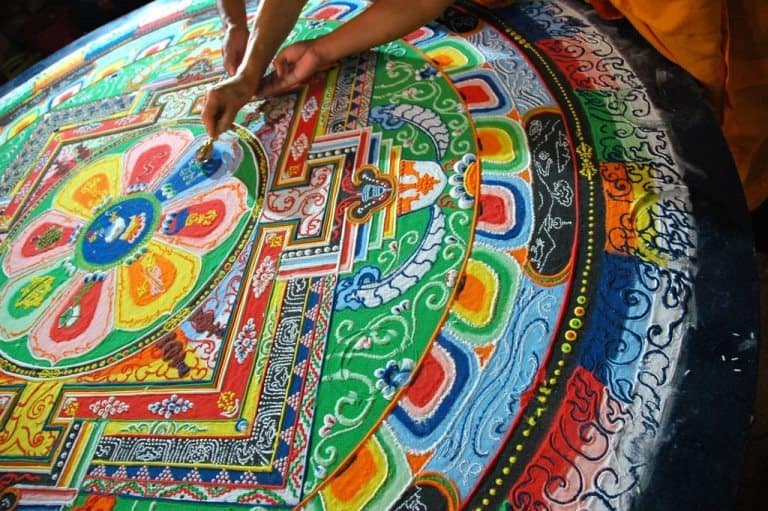
11. Trust your own experience – Goenka style
During the course, we’ve learned to rely on our own experience, and not to blindly trust any given meditation technique. Goenka Gi was a secular fellow and his teaching was universal. During his discourses, he smoothly discarded all organized religions, and types of sectarianism. He said that Dhamma (or “The Law”) was the same for everybody, and you don’t need to take anything on faith. Just do the thing and see for yourself. You should have seen the faces of some people in the room when Goenka said that Jesus was not the son of God. Although secular, Goenka followed the teachings of the Buddha. There’s a common misconception about this. Buddha isn’t a deity. In Pali, Buddha simply means “the enlightened one” and Siddhārtha Gautama earned the title because he reached Nirvana under the Bodhi Tree and started the whole movement.
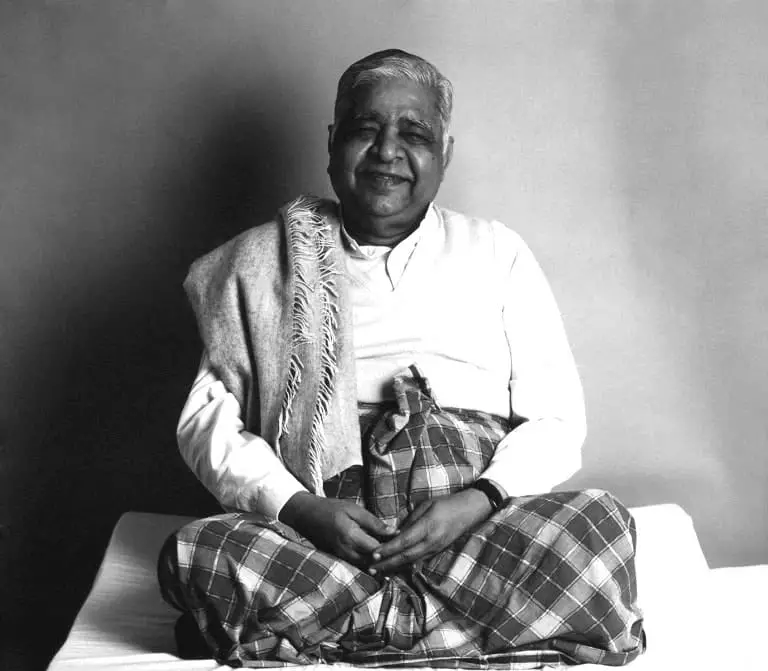
12. What have we learned during the evening discourses?
Mr. Goenka taught us many interesting things, and we all looked forward to his discourses. He was the most chilled-out person I’ve ever seen, and he was so full of joy and good humor. He told us that if we wanted to get closer to liberation, we should observe some basic precepts of Buddhist teaching. (Note that you shouldn’t desire Nirvana since Nirvana is the absence of all desires – it’s tricky). Sila is the moral code. You should abstain from killing any being, stealing, sexual misconduct, wrong speech, and intoxicants. I’m still working on at least two of these, but I’m making slight progress. On the second day, I purposefully killed an ant by drowning it in resin sliming down the pine tree. I just couldn’t resist, but then I was quick to regret this evil deed. Samadhi is the concentration of the mind. With a distracted mind, you cannot work with Dhamma. Panna is wisdom that you get from your practice and your daily experiences. We also learned about the Noble Eightfold Path which consists of:
- Right speech
- Right action
- Right livelihood
- Right effort
- Right Awareness
- Right concentration
- Right thought
- Right understanding
It’s quite difficult to follow all the precepts, but that seems to be the price of enlightenment. Actually, there are dozens of concepts in Buddhism but if you just stick to Sila, Samadhi, Panna, and the Noble Eightfold Path, you should be totally fine. Here you will find a succinct summary of the basic Buddhist teaching.
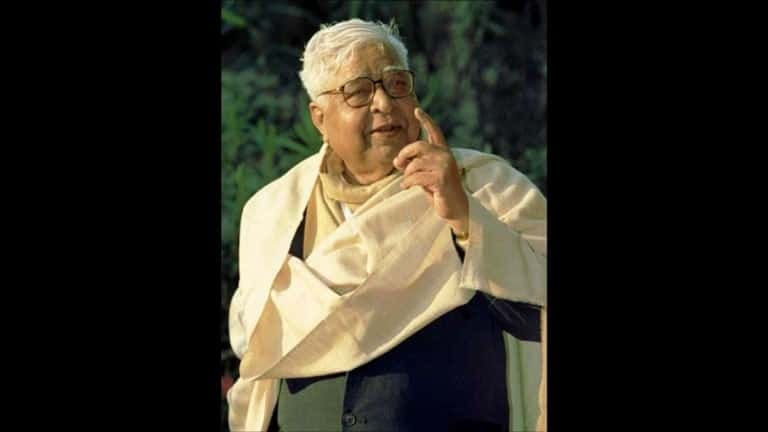
13. The reconnection with the subconscious mind
What I noticed during the course was a flood of dreams which I experienced every night without fail. Normally, I can remember a dream every other week, but during the course, I could remember my dreams with amazing clarity. They were poignant and they were telling me something. I thought that during normal life, I just pushed the messages from the unconscious to the back of my mind. Distraction and intoxication a standard responses while dealing with personal issues. But with this clear mind, everything started coming to the surface. I had to face the truth, accept it, and grow because of it. Also, when I got to bed after a whole day of meditation, I could see the most amazing shapes, colors, and images in my mind’s eye. It looked like Dali’s paintings on steroids. I experience Hypnagogic hallucinations quite often but this time it was different. It was more powerful and unstoppable. After the course, I asked other students about their dreams, and they all reported great amounts of vivid experiences. It seems that when the mind is calm, the subconscious starts to speak. Moreover, during my sessions I experienced a surge of old memories that I hadn’t thought about for years – amazingly they were still there and I felt their influence over me. I tried to just look at them, and let them go without judgment or attachment, and I felt lighter and lighter.
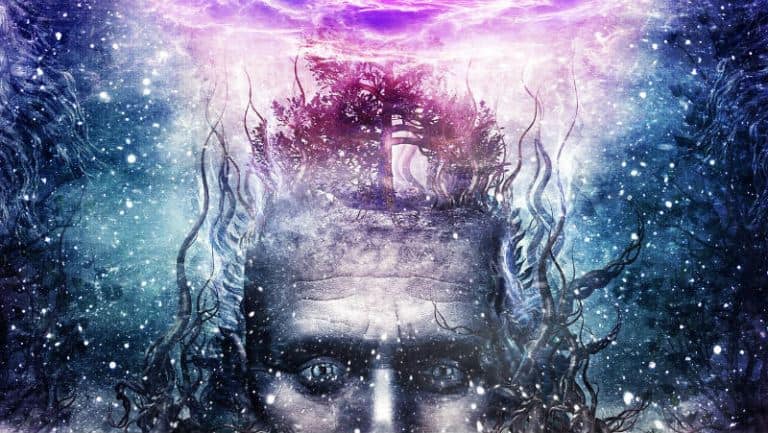
14. Strange experience no. 1 – the absence of pain
I’ve also had a strange experience concerning pain. At some point, we started practicing the Sitting of Strong Determination. It meant that we couldn’t move at all for the whole hour – no matter what. The purpose was to build discipline, and concentration and not move even in the face of some unpleasant sensations. One person started crying horribly during this session. I was determined to sit no matter what and felt such severe pain that I was about to flip. But then, at the moment when the pain reached its peak, I felt a moment of total relaxation and serenity – no pain at all! Then I understood how Tibetan monks can endure being burned alive without flinching. The key is not to identify yourself with the pain. It’s not YOUR pain – it’s just a sensation arising in the consciousness.
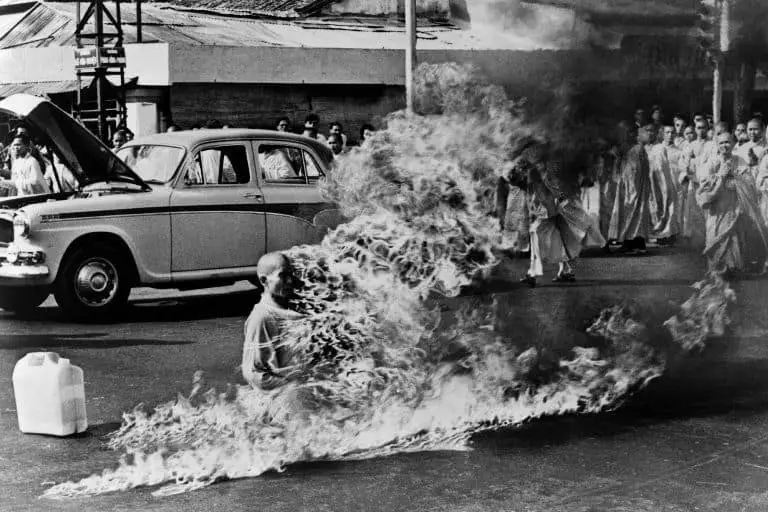
15. Strange experience no. 2 – the violent storm of bodily sensations
The other strange experience happened at the end of the course. We were supposed to practice Metta – the meditation of loving-kindness where you feel grateful for everything and fall in love with everybody. I couldn’t do it because, for some strange reason, I wanted to kill everybody (other students told me they felt similarly during at least one day of the course). Acknowledging my agitation, I decided to stick to Vipassana instead. I observed this sensation and it was strong. My heart was pounding, and I felt a tight sensation in my solar plexus – something like fear mixed with excitement. After everyone finished, I stayed in the hall for almost one hour more, trying to grapple with this feeling of oncoming doom. I tried to stay impartial and observe it. And just like all the other sensations, it dissolved; only this time it took much longer. It felt like Catharsis. A great burden was lifted off my shoulders. Then we were finally able to talk again, and Spaniards took full advantage of that.
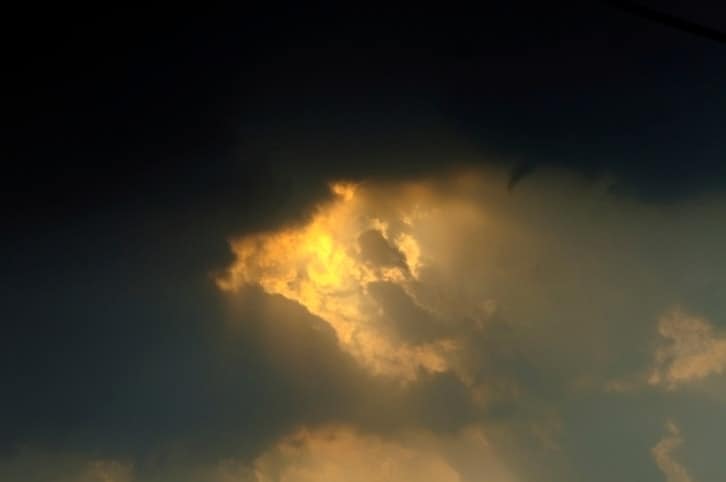
Until next time
The next day I drove off to follow the sun with a Russian guy, and Irish, Ukrainian, and Dutch girls. As we slid through the valleys along the coast of Barcelona I felt ecstatic. I’m looking forward to the next med camp somewhere in the future. Till then, I’ll try to stick with the recommended two hours per day (well, maybe an hour and a half). Have you ever participated in a Vipassana meditation course? Have you experienced similar things? Share your thoughts in the comments section. Recommended reading:
- Jon Kabat-Zinn – Wherever You Go, There You Are
- Sam Harris – Waking Up: A Guide To Spirituality Without Religion
- Bhante Henepola Gunaratana – Mindfulness in Plain English
- Alan Watts – The Way of Zen
- William Hart – The Art of Living: Vipassana Meditation
Hey there, welcome to my blog! I'm a full-time entrepreneur building two companies, a digital marketer, and a content creator with 10+ years of experience. I started RafalReyzer.com to provide you with great tools and strategies you can use to become a proficient digital marketer and achieve freedom through online creativity. My site is a one-stop shop for digital marketers, and content enthusiasts who want to be independent, earn more money, and create beautiful things. Explore my journey here, and don't forget to get in touch if you need help with digital marketing.

